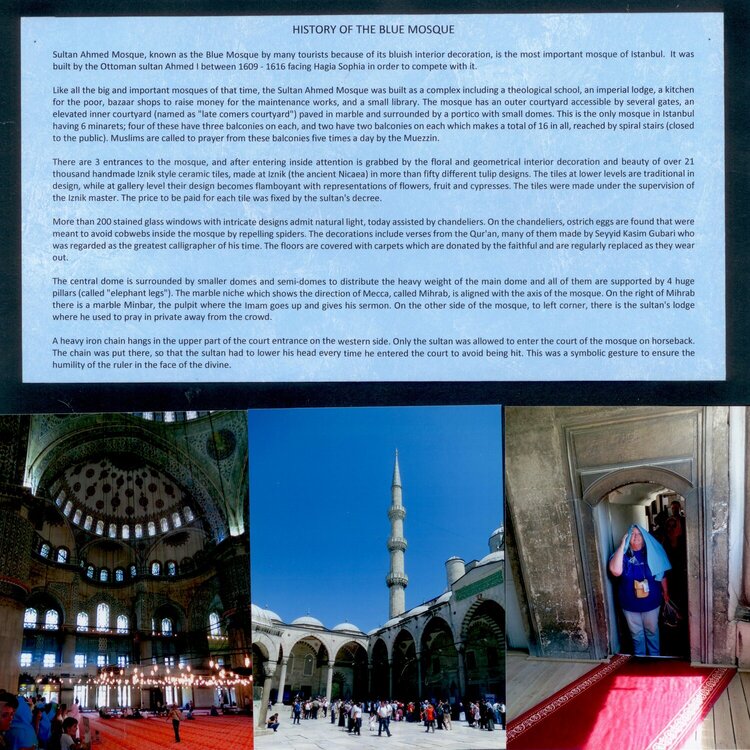

 Give a Cheer
Give a Cheer
HISTORY OF THE BLUE MOSQUE
Sultan Ahmed Mosque, known as the Blue Mosque by many tourists because of its bluish interior decoration, is the most important mosque of Istanbul. It was built by the Ottoman sultan Ahmed I between 1609 - 1616 facing Hagia Sophia in order to compete with it.
Like all the big and important mosques of that time, the Sultan Ahmed Mosque was built as a complex including a theological school, an imperial lodge, a kitchen for the poor, bazaar shops to raise money for the maintenance works, and a small library. The mosque has an outer courtyard accessible by several gates, an elevated inner courtyard (named as "late comers courtyard") paved in marble and surrounded by a portico with small domes. This is the only mosque in Istanbul having 6 minarets; four of these have three balconies on each, and two have two balconies on each which makes a total of 16 in all, reached by spiral stairs (closed to the public). Muslims are called to prayer from these balconies five times a day by the Muezzin.
There are 3 entrances to the mosque, and after entering inside attention is grabbed by the floral and geometrical interior decoration and beauty of over 21 thousand handmade Iznik style ceramic tiles, made at Iznik (the ancient Nicaea) in more than fifty different tulip designs. The tiles at lower levels are traditional in design, while at gallery level their design becomes flamboyant with representations of flowers, fruit and cypresses. The tiles were made under the supervision of the Iznik master. The price to be paid for each tile was fixed by the sultan's decree.
More than 200 stained glass windows with intricate designs admit natural light, today assisted by chandeliers. On the chandeliers, ostrich eggs are found that were meant to avoid cobwebs inside the mosque by repelling spiders. The decorations include verses from the Qur'an, many of them made by Seyyid Kasim Gubari who was regarded as the greatest calligrapher of his time. The floors are covered with carpets which are donated by the faithful and are regularly replaced as they wear out.
The central dome is surrounded by smaller domes and semi-domes to distribute the heavy weight of the main dome and all of them are supported by 4 huge pillars (called "elephant legs"). The marble niche which shows the direction of Mecca, called Mihrab, is aligned with the axis of the mosque. On the right of Mihrab there is a marble Minbar, the pulpit where the Imam goes up and gives his sermon. On the other side of the mosque, to left corner, there is the sultan's lodge where he used to pray in private away from the crowd.
A heavy iron chain hangs in the upper part of the court entrance on the western side. Only the sultan was allowed to enter the court of the mosque on horseback. The chain was put there, so that the sultan had to lower his head every time he entered the court to avoid being hit. This was a symbolic gesture to ensure the humility of the ruler in the face of the divine.
No products have been added to this project.
Thanks for spreading positivity!
December 30, 2014
December 29, 2014
December 28, 2014
December 28, 2014
December 28, 2014
December 27, 2014
December 27, 2014
December 27, 2014
December 27, 2014
December 27, 2014
December 26, 2014